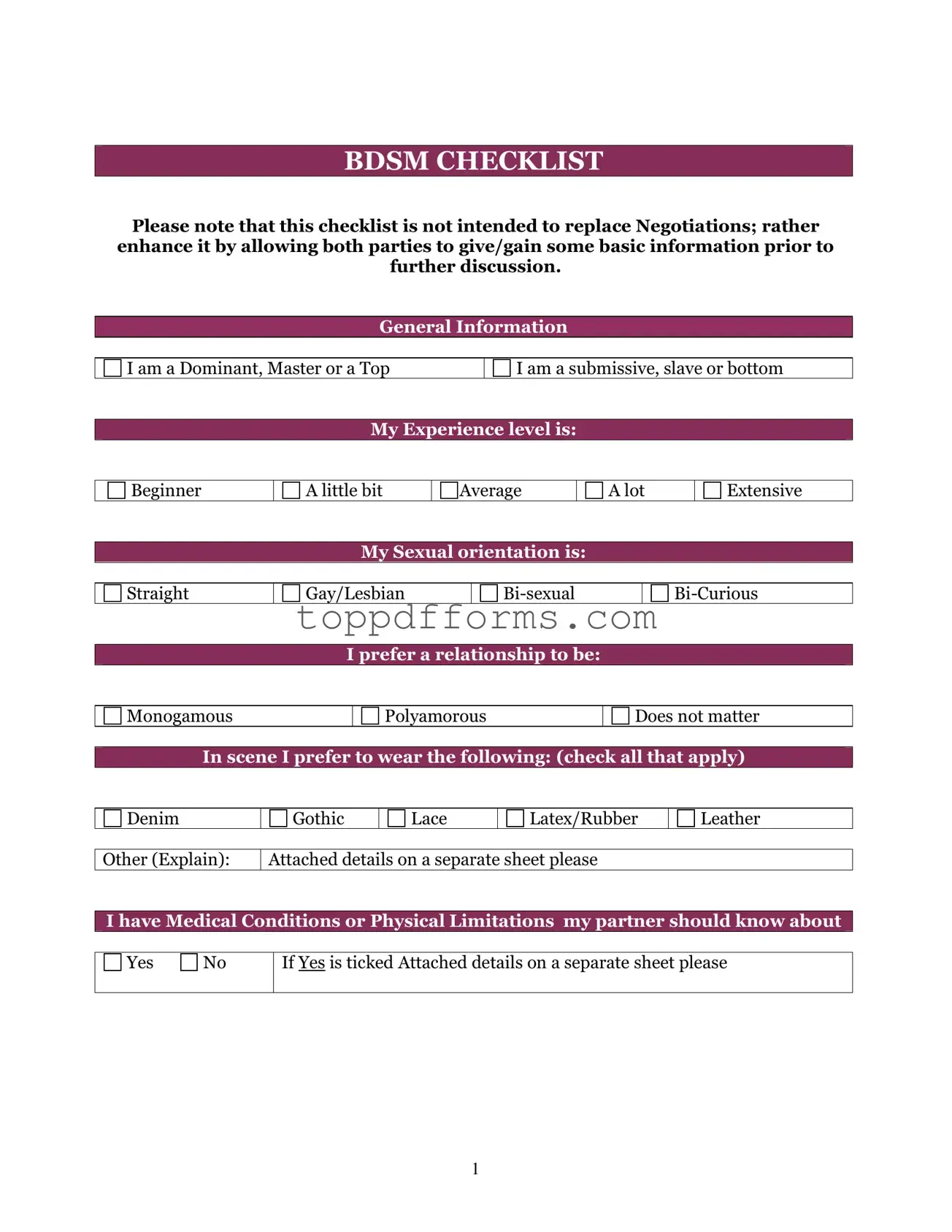What is the BDSM Checklist form?
The BDSM Checklist form is a tool designed to help individuals and couples explore their interests, boundaries, and desires within the realm of BDSM. It serves as a guide to facilitate discussions about preferences and limits in various activities, ensuring that all parties are informed and consenting. The checklist can include a wide range of activities, from bondage and discipline to dominance and submission, allowing users to indicate their interests and comfort levels.
How do I use the BDSM Checklist form?
To use the BDSM Checklist form, begin by reviewing the list of activities and concepts included. Take your time to reflect on each item and mark your level of interest, which may range from "not interested" to "very interested." After completing the checklist, share it with your partner or partners. This can open up a dialogue about what each person enjoys, their limits, and any potential boundaries that should be respected during play.
Is the BDSM Checklist form only for couples?
No, the BDSM Checklist form is not limited to couples. It can be used by individuals, groups, or anyone interested in BDSM practices. Whether you are exploring your interests alone or with multiple partners, the checklist provides a structured way to communicate desires and boundaries. It is a versatile tool that can accommodate various relationship dynamics.
What should I do if my partner and I have different interests on the checklist?
If you and your partner have differing interests on the BDSM Checklist, it is essential to approach the situation with open communication. Discuss each person's preferences and explore the reasons behind your interests. Compromise may be possible, allowing both parties to find common ground. It’s also important to respect each other's boundaries; if one partner is uncomfortable with a specific activity, it should not be pursued.
Can the BDSM Checklist form help in establishing safe words?
Yes, the BDSM Checklist form can be a useful tool in establishing safe words. While the checklist focuses on preferences and limits, it also encourages discussions about safety and consent. During your conversation, you can agree on safe words that will be used to communicate comfort levels during play. This ensures that all parties feel secure and can express their needs effectively, enhancing the overall experience.
